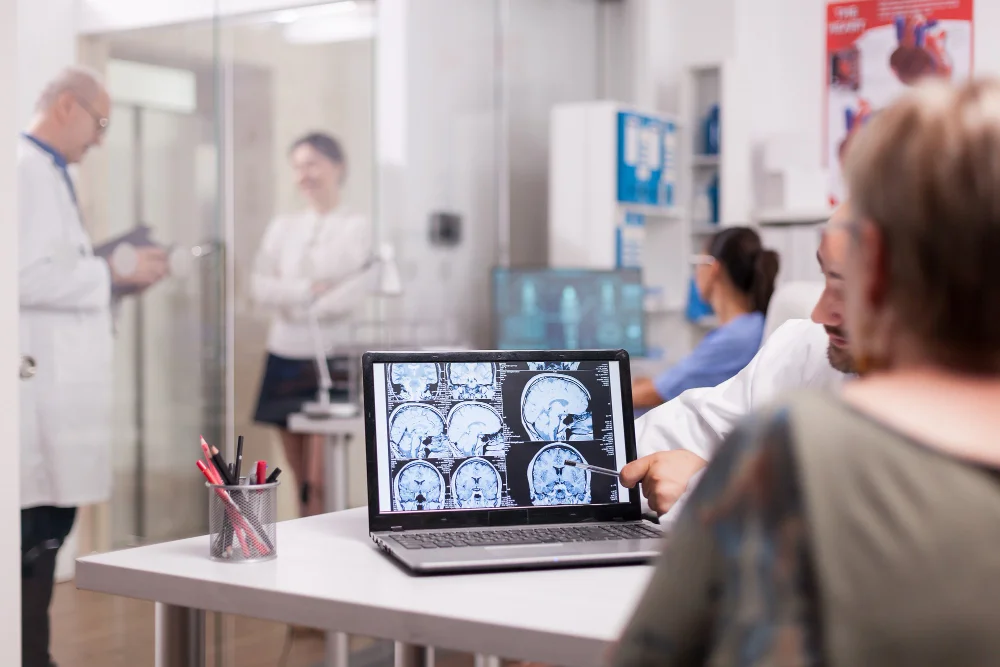Depression is a pervasive mental health condition that affects millions of people worldwide, and for many, the journey to recovery can be long and difficult. For those with treatment-resistant depression, finding effective treatments becomes even more challenging.
In this article, we will explore what TMS stands for and how TMS therapy offers hope for individuals who have not found relief through traditional treatments.
Understanding Depression and Treatment-Resistant Depression
Depression is a mental health disorder characterized by persistent feelings of sadness, hopelessness, and a lack of interest in daily activities. It is more than just feeling down for a few days; depression affects one’s ability to function in everyday life and can interfere with relationships, work, and overall well-being.
For some individuals, traditional treatments such as antidepressants and therapy may not be effective. These individuals are often diagnosed with treatment-resistant depression, a form of depression that does not respond well to conventional therapies. This can lead to feelings of frustration and hopelessness as individuals search for alternative treatment options.

What Does TMS Stand For?
TMS stands for Transcranial Magnetic Stimulation, a non-invasive treatment that uses magnetic fields to stimulate nerve cells in the brain. This method is primarily used to treat depression, especially in patients who have not responded to other treatments. TMS therapy is gaining recognition for its ability to help individuals with depression, particularly treatment-resistant depression.
How TMS Therapy Works
TMS therapy works by using magnetic pulses to stimulate specific areas of the brain that are believed to be underactive in individuals with depression. These pulses are similar to the magnetic fields generated by an MRI machine, but they are targeted at the brain’s prefrontal cortex, an area associated with mood regulation. By stimulating these regions, TMS aims to increase brain activity and alleviate depressive symptoms.
Why TMS Therapy Works for Depression
TMS therapy targets the brain’s electrical activity to promote healthier patterns of functioning. The magnetic pulses encourage the brain to produce neurotransmitters, such as serotonin and dopamine, which are crucial for regulating mood. This process is believed to help correct the chemical imbalances in the brain that are often present in individuals with depression.
TMS for Treatment-Resistant Depression
Treatment-resistant depression refers to depression that does not improve after trying multiple antidepressant medications and therapies. For those with this condition, finding an effective solution can be frustrating. Fortunately, TMS offers a promising alternative for many individuals.
Defining Treatment-Resistant Depression
Treatment-resistant depression is a term used to describe depression that doesn’t respond to typical treatments, such as medications or psychotherapy. For those affected, it means that even after trying different antidepressants, therapies, or combinations of both, they continue to experience debilitating symptoms of depression.
How TMS Offers Hope
For individuals struggling with treatment-resistant depression, TMS provides a new opportunity for recovery. It offers a non-invasive, effective treatment option for those who have not found relief from traditional treatments. Studies have shown that many individuals who undergo TMS therapy experience significant improvement in their symptoms, with some even achieving full remission.
Benefits of TMS Therapy for Depression
TMS therapy has become a widely used treatment for depression, and it offers several benefits that make it an appealing option for those struggling with mental health issues.
Non-Invasive Nature of TMS
One of the main advantages of TMS therapy is its non-invasive nature. Unlike traditional treatments like medication or electroconvulsive therapy (ECT), TMS does not require surgery or anesthesia. The procedure is performed while the patient remains awake and alert, making it an easier option for many individuals.
Minimal Side Effects
TMS therapy has minimal side effects compared to other treatments for depression. The most common side effects are mild headaches or scalp discomfort, which typically go away shortly after the session ends. This makes TMS a more tolerable treatment for those who experience unpleasant side effects from medications or ECT.
Quick Recovery
Most patients can resume their normal activities immediately after a TMS session. Unlike ECT, which may require several days of recovery, TMS allows patients to quickly return to work or other responsibilities, making it a practical option for many.
TMS Therapy vs. Traditional Depression Treatments
TMS Therapy vs Medication
While antidepressant medications are commonly prescribed for depression, they may not work for everyone. TMS therapy offers an alternative for individuals who have not found relief with medication. Additionally, TMS may work faster and offer longer-lasting results compared to medications, which often take weeks to take effect.
TMS Therapy vs Electroconvulsive Therapy (ECT)
Electroconvulsive therapy (ECT) is another treatment option for severe depression. However, ECT requires anesthesia, and patients often experience memory loss as a side effect. TMS therapy, on the other hand, does not involve anesthesia, and the risk of memory loss is minimal.

The Process of Getting TMS Therapy
Initial Consultation and Screening
The first step in getting TMS therapy is an initial consultation with a healthcare provider. During this consultation, your doctor will assess your medical history, current symptoms, and previous treatments to determine if TMS is the right option for you. You may also undergo a screening process to ensure that you are a suitable candidate for TMS therapy.
How TMS Sessions Work
Once you begin TMS therapy, the treatment is typically administered in daily sessions over the course of several weeks. During each session, a magnetic coil is placed on your scalp, and targeted magnetic pulses are delivered to specific areas of the brain. Each session lasts about 30-40 minutes, and patients typically experience minimal discomfort during the process.
Post-Treatment Care and Expectations
After completing a course of TMS therapy, most patients experience an improvement in their symptoms. However, some individuals may require ongoing maintenance treatments to sustain their progress. Your healthcare provider will work with you to develop a plan for continued care and ensure that you are receiving the best possible treatment for your needs.
Is TMS Right for You?
Ideal Candidates for TMS Therapy
TMS therapy is generally recommended for individuals who have not found relief from traditional treatments for depression. Ideal candidates include those who have tried multiple medications without success or those who experience side effects from medications that are intolerable.
When to Seek TMS Therapy
If you have struggled with treatment-resistant depression and have not found success with medications or psychotherapy, it may be time to consider TMS therapy. Consulting with a healthcare provider can help you determine if this innovative treatment is the right choice for you.
Exploring TMS Therapy as a Treatment Option
If you’re struggling with treatment-resistant depression, TMS therapy could be the answer you’ve been searching for. It offers hope for individuals who have not found relief from traditional treatments and provides a non-invasive, effective solution to manage depression. If you believe that TMS therapy might be right for you, be sure to consult with your healthcare provider to discuss your options and take the first step toward finding relief.
TMS stands for Transcranial Magnetic Stimulation, a promising option for those who need an alternative approach to managing depression. If you’re considering TMS therapy, consult with your doctor to find out if it’s the right choice for your mental health needs.
